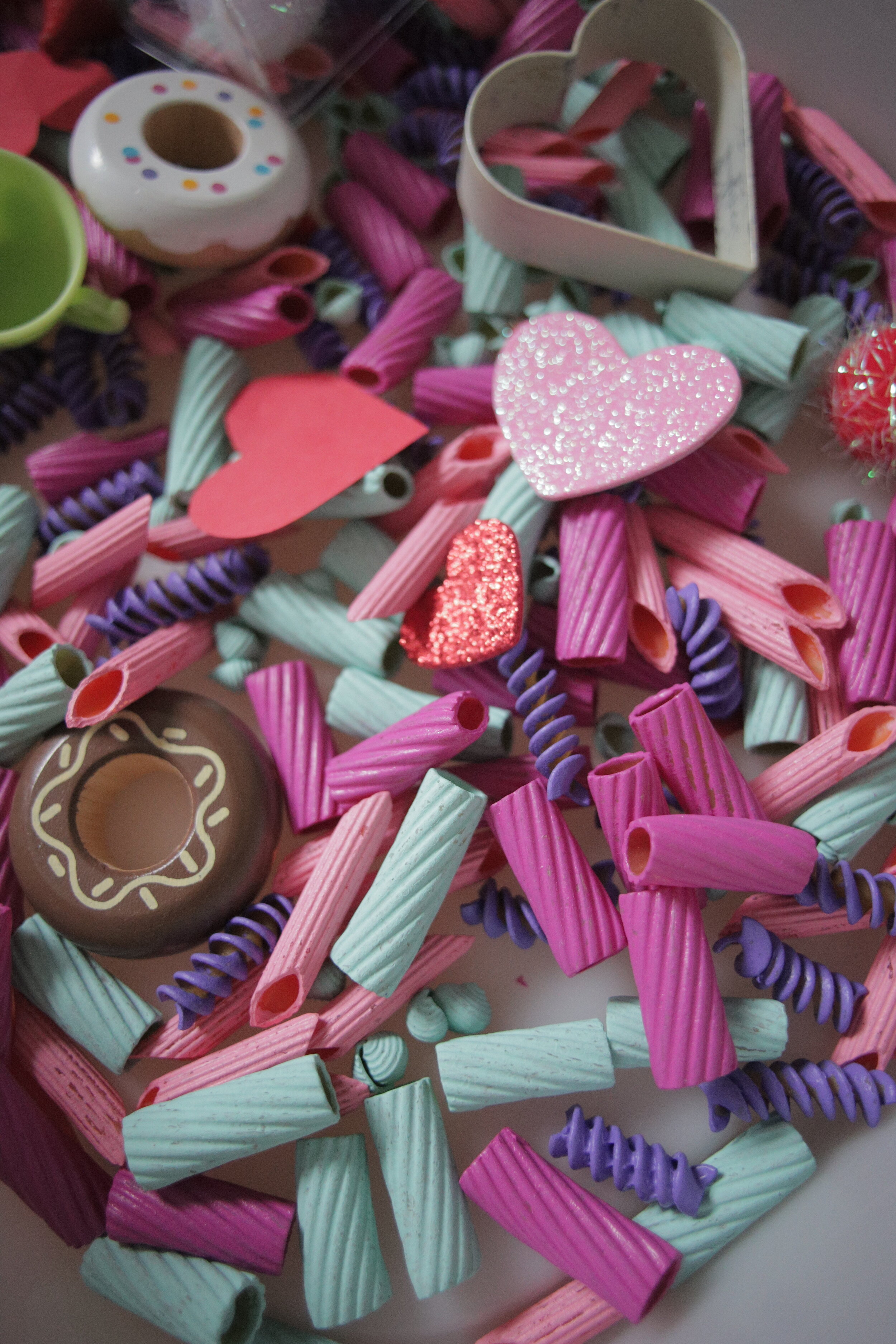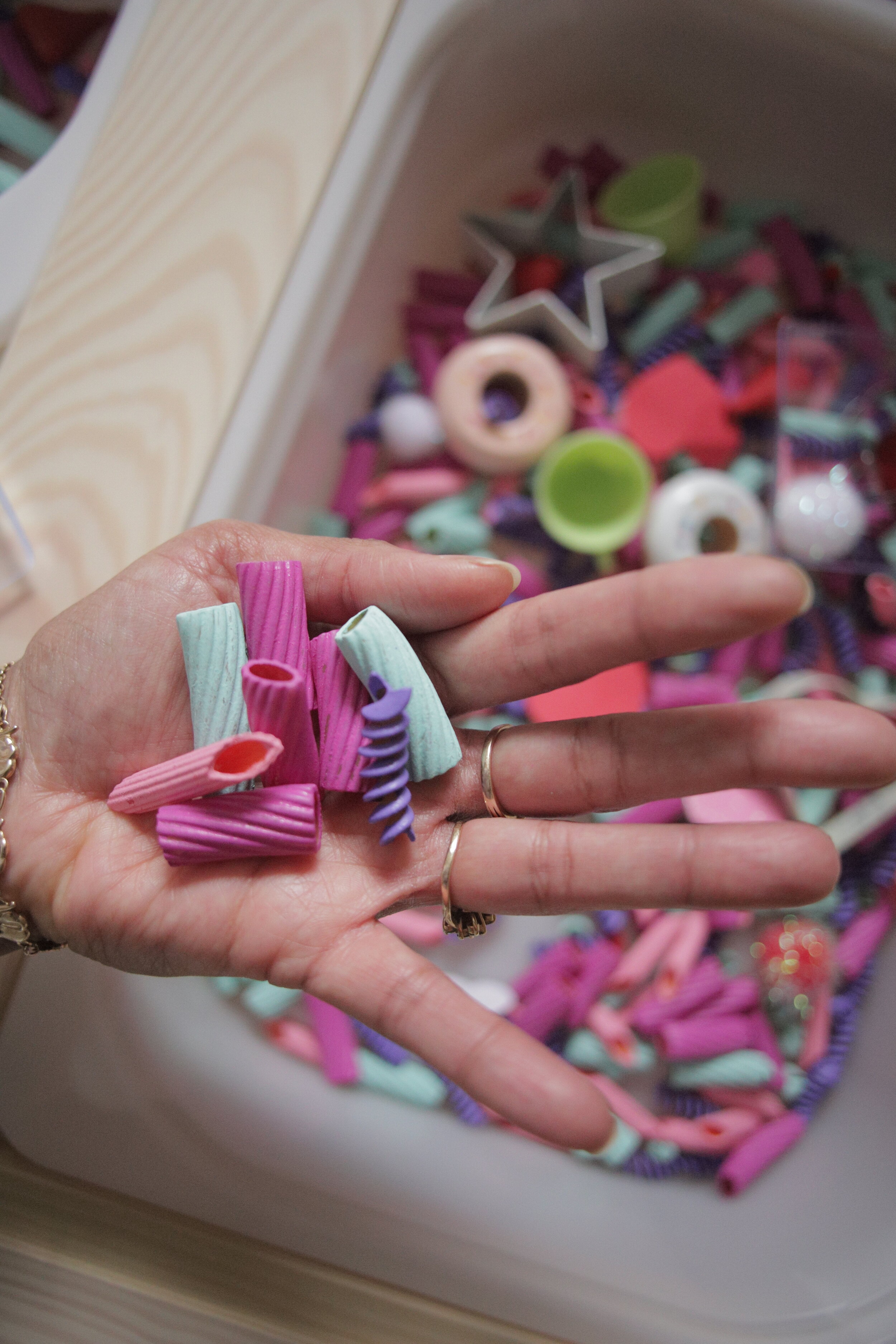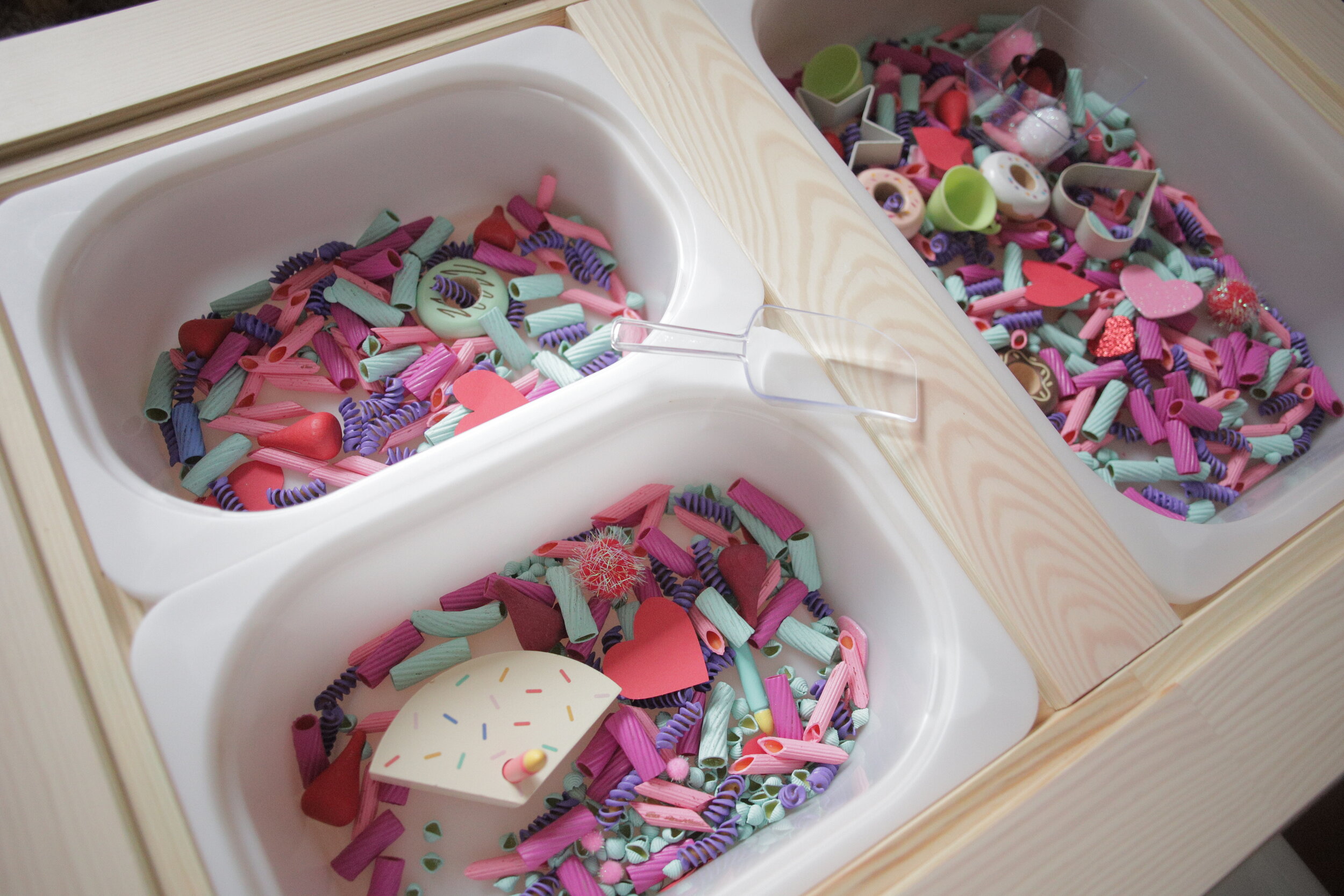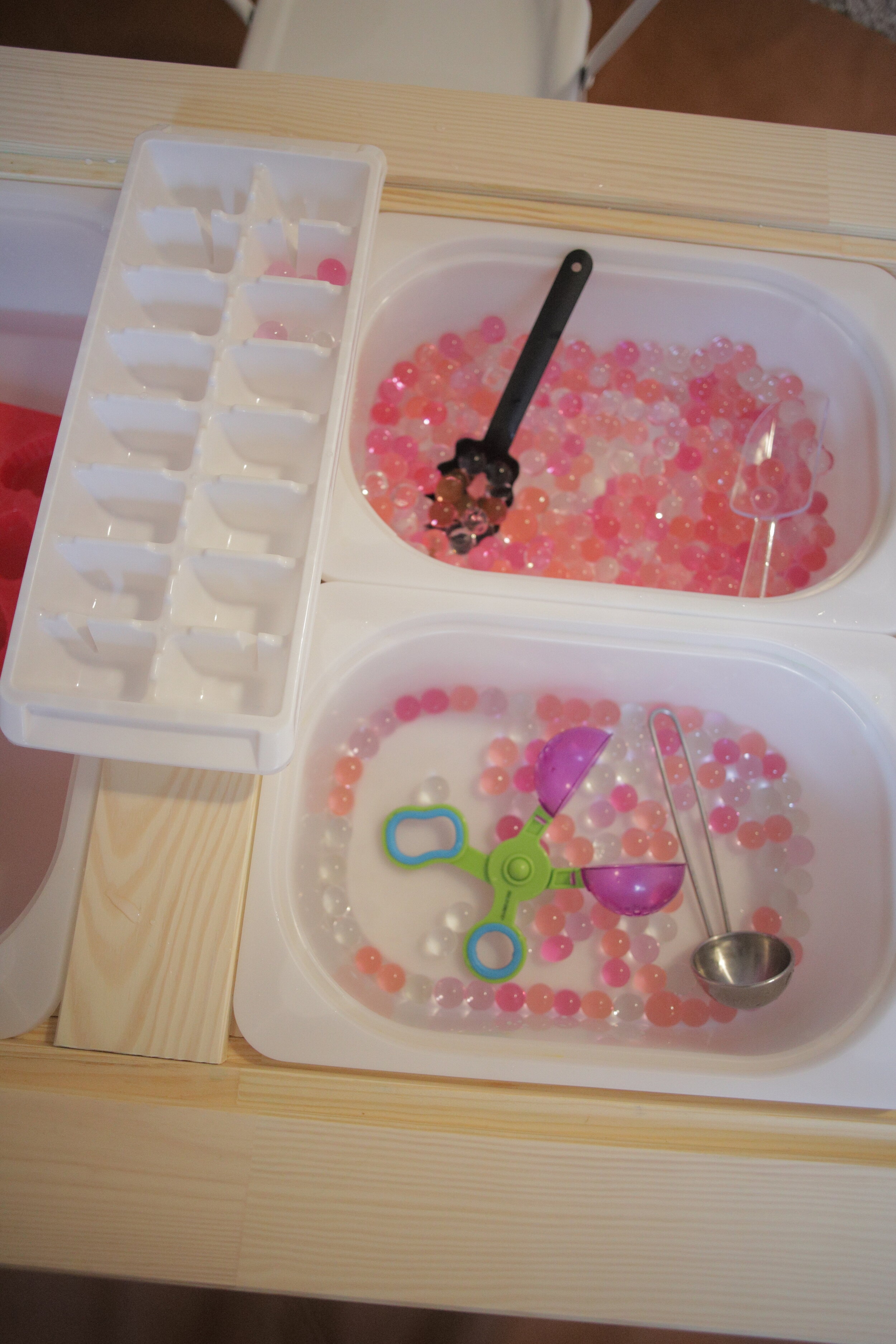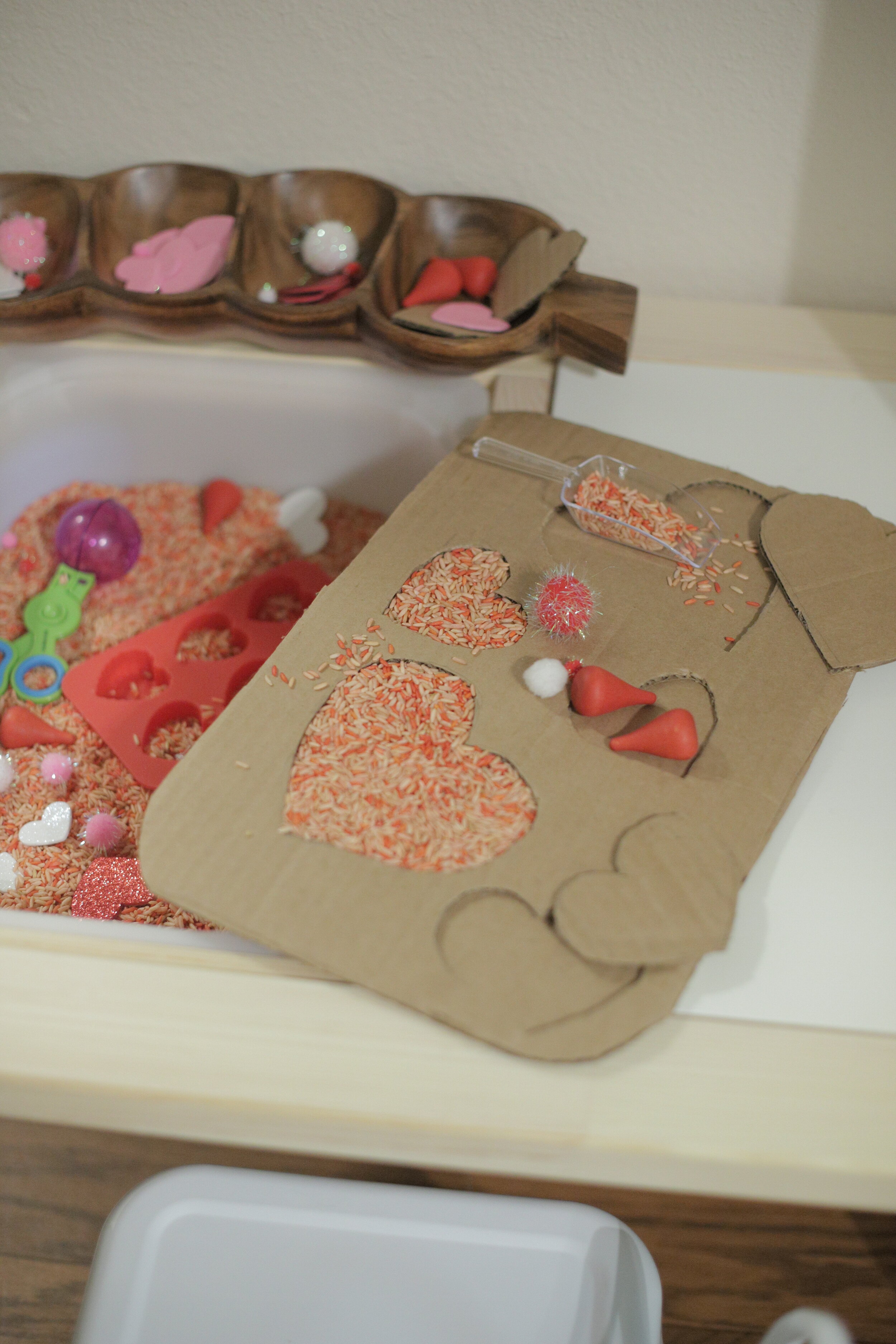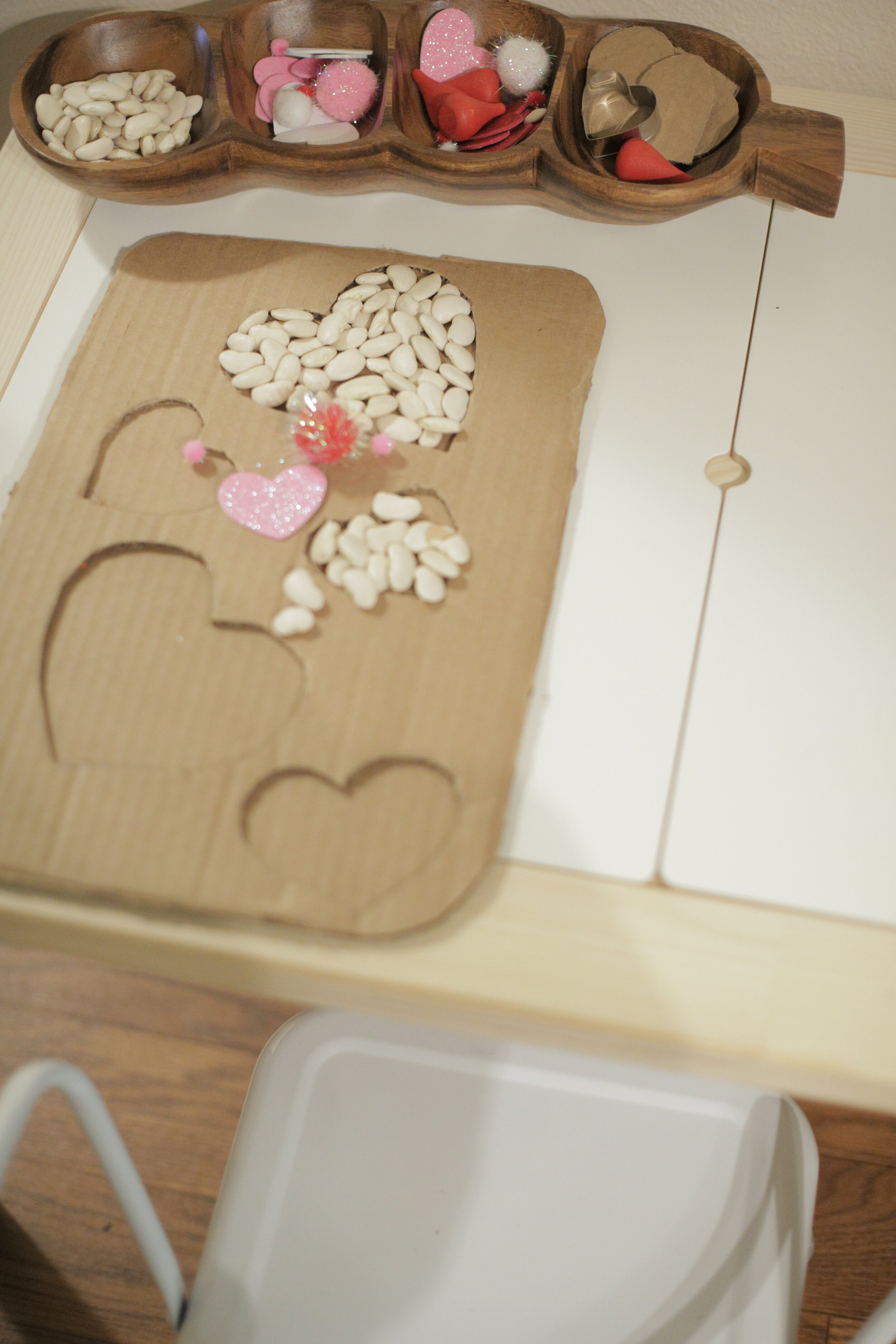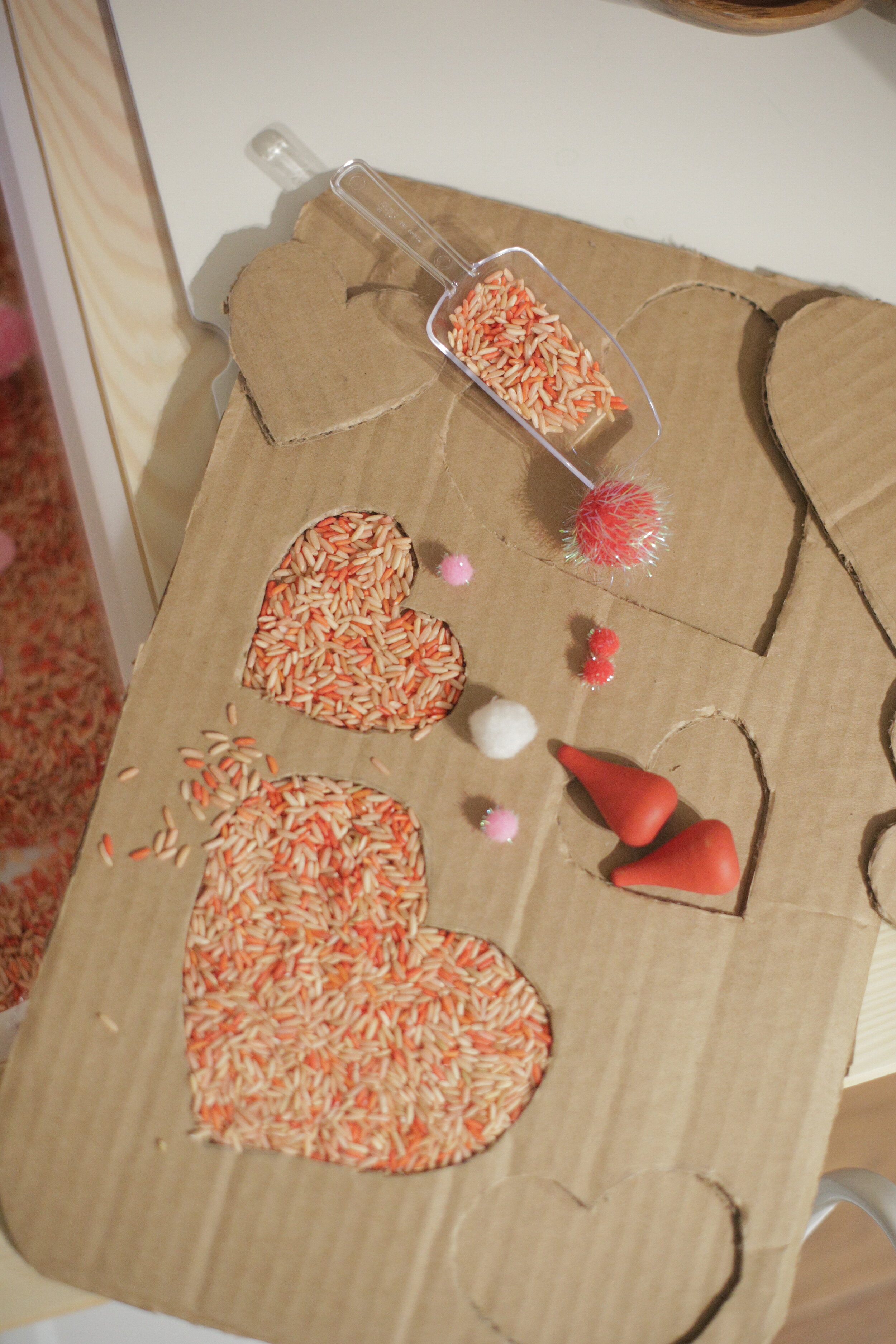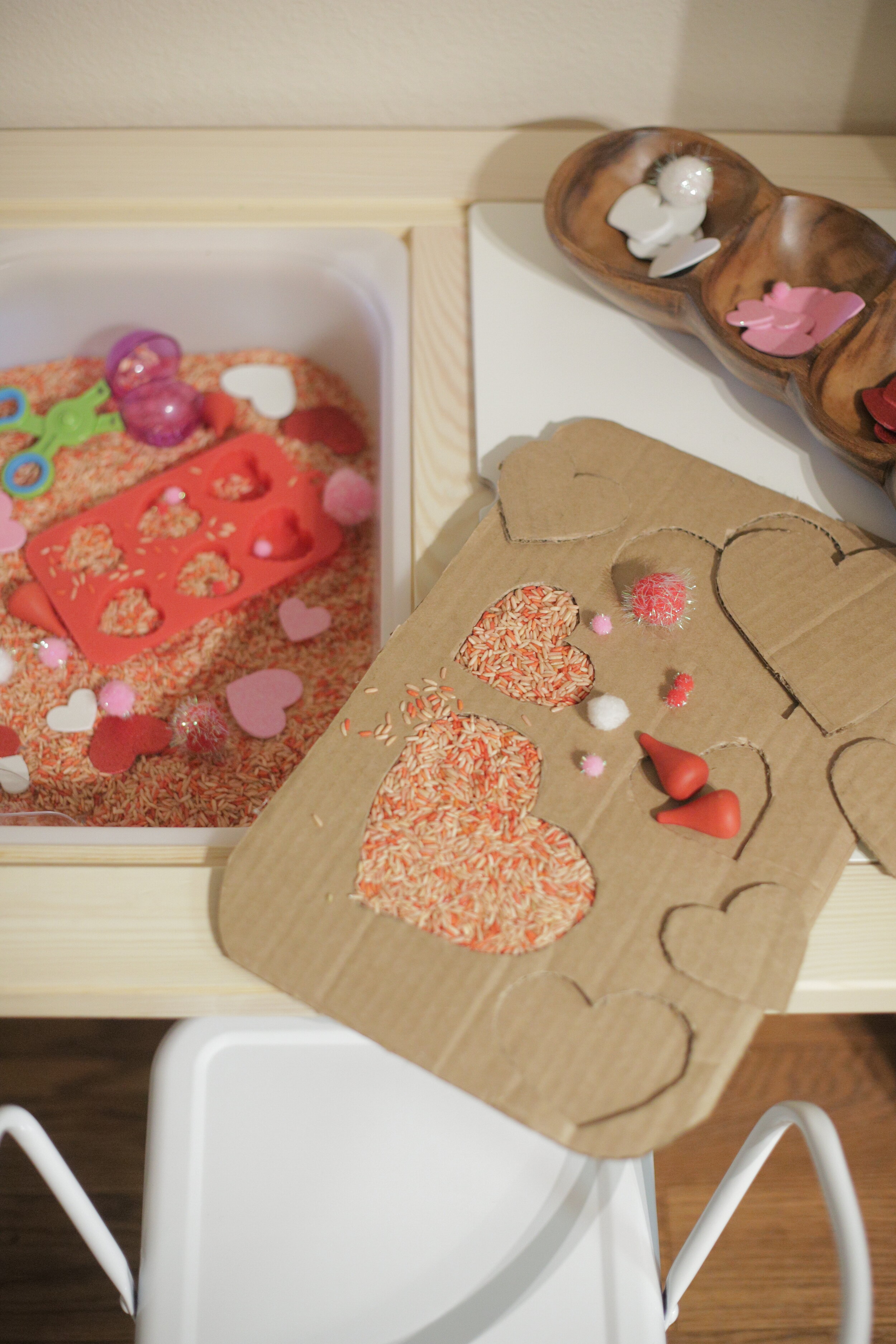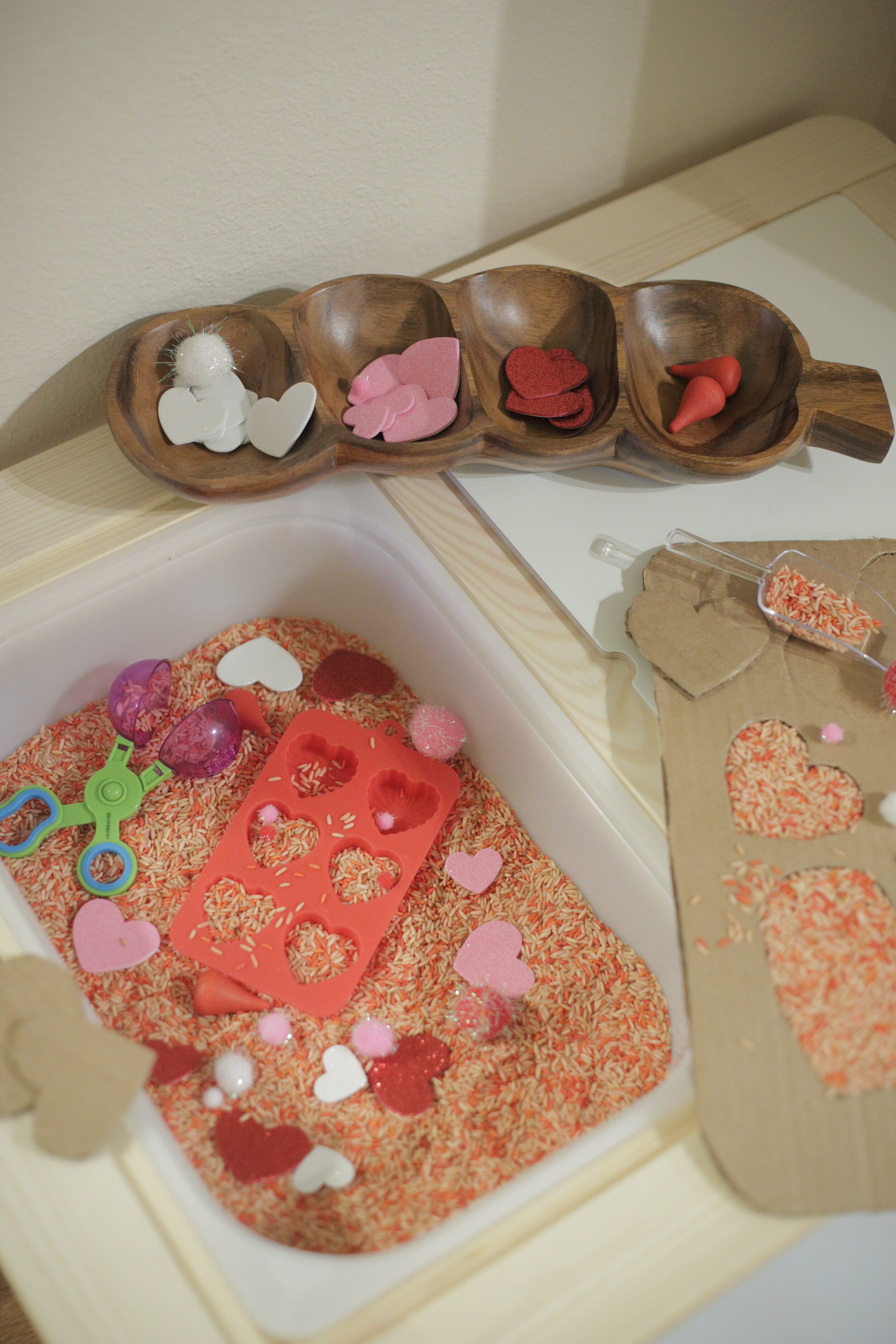Valentine’s Day Bins
Painted Pasta
Objective: Open ended play with pasta and other loose parts and materials!
Basic Materials:
For this bin you’ll need 2 boxes of cheap pasta, acryllic paint, baggies of some sort (I used produce bags), and hand sanitizer. To make the pasta I put the pasta in the produce bag, a large dollop of acrylic paint, and a generous squirt of hand sanitizer. I massaged it around until the pasta was completely covered and then laid it out on parchment paper to dry. I added donuts and other play foods to get the imagination wheels turning.
Benefits:
This activity is intended to spark her creativity and imagination! She’s encouraged to move and manipulate the materials provided in any way she sees fit! Major sensory benefits include touch and sound as the noodles make a significant amount of noise when being sloshed around.
How I Interact:
Now that Yumi is 20 months old, there is a lot less demonstrating happening. She often times will opt to scoop and transfer materials on her own. Other then stepping in when materials start to go everywhere but the bin she is left to her own imagination. She pretended to eat the play food, scoop the noodles from one bin to another, and swirl and slosh them around.
Waterbead Bin
Objective: Open ended play sensory activity!
Basic Materials:
This bin consists of water beads soaked in water for a few hours, various scooping materials, tongs, and an ice tray! The beads can be found at your local craft store, Walmart, and are also available on Amazon.
Benefits:
This bin is a busy toddler win! It is minimal mess and offers a great sensory experience as the beads are soft, slippery, and squishy. They’re great for fine motor development, language building naming/learning colors, and a great science opportunity in observation and prediction as the beads bounce and jump all around!
How I interact:
I typically offer a very quick demonstration of what can be done with the scoops, bowls, and tongs, but at 20 months Yumi is very familiar with all the items and jumped right in scooping and pouring on her own. She has taken a keen interest in squishing the beads a lot more now and to that my response is to remind her not to and remove the squished pieces. I did attempt to seperate them by color in the ice tray, but she’s always welcome to take or not take on the activity offered.
A note on safety: According to the American Academy of Pediatrics (AAP) water beads are safe to play with and are non-toxic and biodegradable. However, they cannot be consumed! These are best used with older children who aren't mouthing objects, and even then be sure to watch your little one attentively. I would discourage the use of the larger “jumbo” water beads for children under the age of four. As they do grow to up to 200 times their initial size once fully expanded!
Heart Cutout Puzzle & Loose Parts
Objective: Fit the cutout pieces into the puzzle and/or fill with the loose parts and materials provided!
Benefits:
A simple fine motor activity, great for keeping them busy! This exercise requires a decent amount of focus and is a great problem solving opportunity as they work to fit the correct heart cutouts into their corresponding spots.
Bin Materials:
This bin consists of rice, beans, loose parts, scoops, and a recycled piece of cardboard with heart shapes I drew and cut out with a box cutter as a makeshift puzzle.
How I Interact:
I fit the puzzle pieces back into the puzzle, poured rice int the heart cutouts, and dumped it to let her jump in! To encourage her own thought and creativity I aim to be as hands off as possible.

